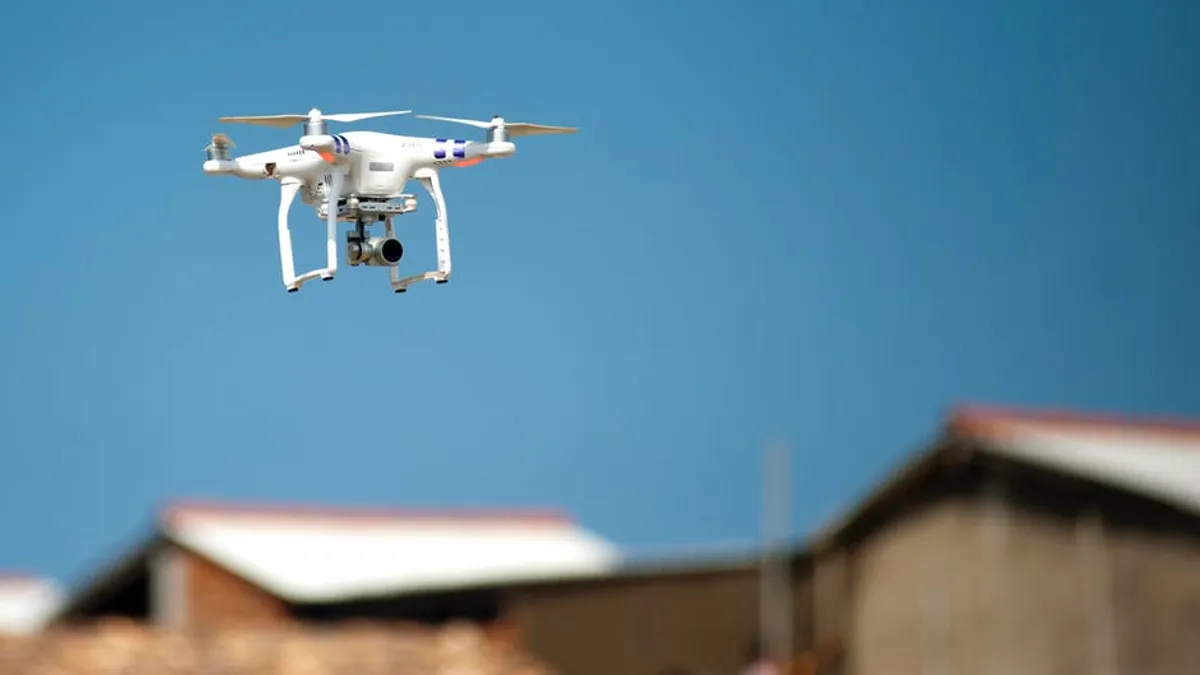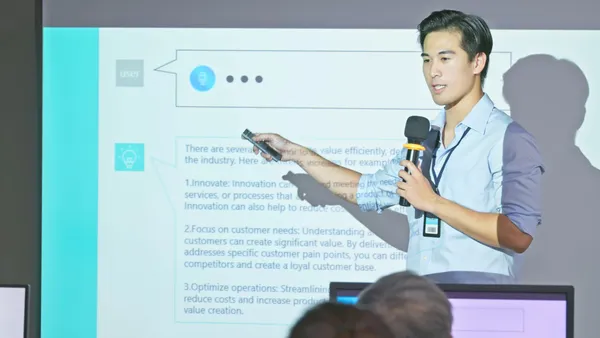Dive Brief:
- After a two-week training class, and earning their drone pilot certification from the Federal Aviation Administration, educators Ray Sevits and David Steele now teach their middle and high school students in Colorado Springs, Colorado, about the physics of drones, and even how to build them, according to EdTech: Focus on K-12.
- Using the drones in classrooms has required some coordination with other departments, including IT. The schools also bought drones at different price ranges from those that were about $100, to some more expensive options including the DJI Phantom 4, a model no longer made, but that at the time had a four-figure price tag.
- Educators believe giving students hands-on time with drones gives them an advantage by allowing them to develop skills that may provide a fast track a future career, whether that’s designing, building or piloting drones, shooting aerial video or writing code that’s ultimately responsible for getting these machines up in the air and flying.
Dive Insight:
More robot than paper airplane, drones are slowly coming down in price making it possible for schools to consider their use in educational settings. Certainly fun, those flying whirligigs can also add a nuance to a classroom lesson, helping students understand engineering principles of flight, or coding basics that deliver instructions to these devices. Drones — with still and video cameras attached to them — can also bring back images impossible to get from on-the-ground methods.
Drones can range in price from less than $100 to thousands of dollars. At the lower price point, drones start to attract educators, as the cost makes it possible for them to purchase a full classroom set. However, before curriculum leaders and superintendents consider green-lighting the expense of these devices — whether for a physics class or photography — they should consider some of the safety and legal basics.
To start, educators must become familiar with rules that the Federal Aviation Administration has outlined — and mandated — for all those who fly these unmanned aerial vehicles (UAV). There are four different classes of drone pilots: those who use them for recreational use, those who fly them for commercial purposes, those who use them as part of a public safety or governmental role, and those in education.
Registering a drone is required if it weighs between .55 pounds (250 grams) and 55 pounds (25 kg.) There are a lot of consumer drones that weigh far less than that — the $99 DJI Tello, (an educator version is $129) for example is just 80 grams. But educators still need to understand where and when they can fly. For example, drones can’t be flown over people — rotors on drones can harm someone if a UAV comes down unexpectedly. Other rules include not flying near other flying aircraft and keeping the drone in sight at all times.
Before approving any new technology tool, administrators want to know how that object will be woven into curriculum and enhance existing lessons. They should also make sure there are solid plans in place to use them, and what they can bring to students' educational journey. Because they’re regulated by a federal agency, drones require even more steps, which should be understood before bringing these flying educational tools into the classroom.













